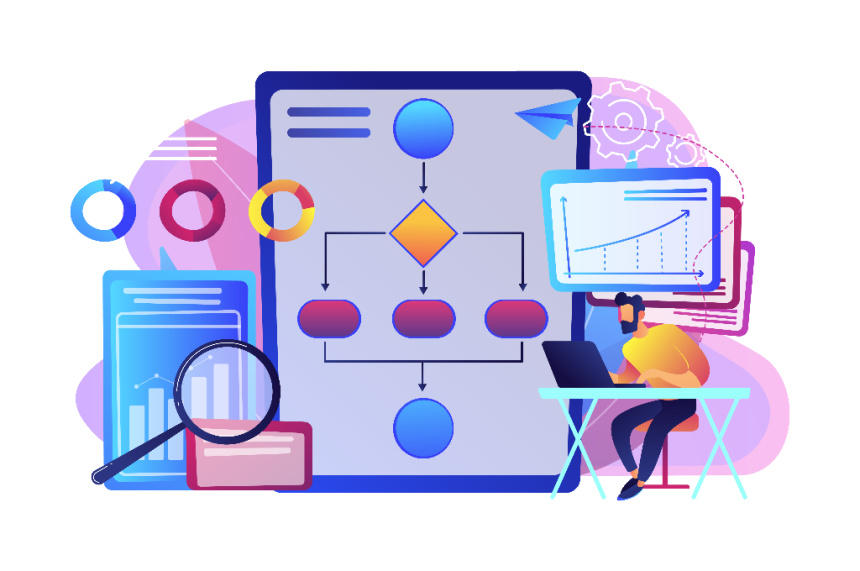Why spreadsheets and other disconnected systems are not suited for RFQs?
Business | January 24, 2023 | By
Spreadsheets, emails, word documents, and other similar breeds of applications have become an integral part of our everyday lives. It is in these applications that most of the work happens.
In manufacturing, it is in spreadsheets where several parts come together before they become a final product, i.e., even before these parts enter the plant premises. But, it is in these tools where the probability of mistakes is high. A small mistake might even cripple the entire product launch. And thanks to the unprecedented issues in the past years, the effects of such mistakes have amplified. Because these tools, however useful they may be, cannot become dynamic like the industry it serves. Take the request for quotation process (RFQ), for instance. Though the process is simple on paper: receive purchase requests, fill in necessary details and send them to potential suppliers; it is not so. The input for sourcing a particular part/component comes from multiple teams such as PMO and engineering. It becomes difficult for the buyer to consolidate all the requirements in a single spreadsheet and convert it as per their needs.
Delays right from the start
When it comes to product launch, a certain amount of chaos is expected and accepted too. The product launch process is a complex one: several parts, multiple revisions and challenges, and only limited resources. So to get maximum results, there must be an efficient use of resources. But does it happen that way?
When a purchase request reaches the commodity leads, they review the pending parts statuses of their buyers. And based on the buyer’s existing load, the leads delegate the new purchase requests to them. This process is not new. But the problem is, these discussions take time. Because, the details are not readily available and collecting them itself takes a few days. There’s a delay right at the beginning itself. And like a domino effect, these delays add up and the buyers will have to break their heads to make up for the time lost.
Overwhelmed with data
When parts undergo revisions, the engineering teams make use of PLM to track and manage them effortlessly. But, since most sourcing systems are disconnected from PLM, it becomes an arduous task for buyers to keep track of the changes down to the part level. While some revisions may simply be non-design related, some changes may require the buyer to retract the previous supplier quote and obtain a new quote. And this is highly challenging because buyers need to also map these changes to price revisions if there are any. And repeating this for 1000s if not more number of parts is a project by itself. So, they resort to storing the details in external documents – spreadsheets, word documents, etc., which are attached to the RFQs.
Additionally, the program management team sends information such as production volumes; make/buy decisions; build dates for the pilot, proto, and production; and other attributes that the buyers need to consider during sourcing.
Data stored in spreadsheets are only a snapshot of the process and not real-time information. So it becomes the buyers’ job to spend countless hours tracking and collating every detail, ensuring everyone is on track. And at almost every step in the program launch, most of the stakeholders are working with out-of-date, inaccurate, and non-actionable data. Moreover, in doing all of these they are losing precious time that can be utilized in strategic decision-making.
There’s confusion, there’s chaos!
Once the RFQs are prepared after crossing all the hurdles, the buyers mail them to suppliers with attachments containing the details. In general, at least 3-4 suppliers are considered for a part – for some suppliers RFQs for several parts are also sent – before one among them is awarded a contract. Even if there are only 20 parts, think about the number of emails to be sent. And the probability of sharing information referring to the incorrect part is high in emails. Such confusions are costly and cause unimaginable issues.
There’s a solution in Source-to-Pay software
Integration of the sourcing software with PLM and ERP ensures all the relevant sourcing data is available when and how it is needed. Also, it is possible to pull past purchase history, cost details, supplier and buyer details, and other attributes for every single part. Eliminating the need for continuously updating spreadsheets. Thus, the data available is the single source of truth for a part at every stage of the product launch. Built with industry know-how, Zumen is a comprehensive solution for the Direct Material Source-to-Pay cycle and not just handling the RFQs. Zumen solves the endemic problems of siloed workflows, miscommunication, and inaccurate and non-actionable data. To know more, schedule a free demo, or contact us at [email protected].
















